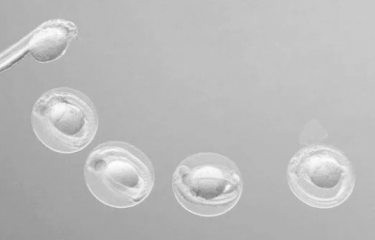State-of-the-art super-resolution microscopes enable us to observe biological structures at resolutions approaching molecular scale. A good example is single-molecule localization microscopy (SMLM). Although this microscopy technique is widely used in life sciences, the vast majority of SMLM images produced are not shared with the scientific community. But these data have real value, not least because they can be used to train algorithms, for example to speed up super-resolution imaging or analyze molecular structures. Scientists from the Institut Pasteur have developed ShareLoc, a platform to host all the images produced by SMLM microscopy.
Using artificial intelligence to speed up super-resolution microscopy
ShareLoc is particularly useful for its potential to address a major drawback of the SMLM technique: the extremely long acquisition time for images (typically around a minute or even up to an hour, because tens of thousands of conventional resolution images need to be acquired to obtain a single super-resolution image). To overcome this problem, Christophe Zimmer and his team in the Institut Pasteur's Imaging and Modeling Unit developed the ANNAPALM method back in 2018. Based on deep learning, it involves training a program to reconstruct SMLM images based on data obtained in a much shorter time than conventional super-resolution microscopy – so much shorter that "at the time we sped up super-resolution imaging of microtubules by a factor of around 100," explains Christophe Zimmer.
But there was a snag. "The performance of deep learning methods is highly dependent on the quantity and variety of training data," continues the scientist. And as indicated above, although large quantities of SMLM data exist, they are rarely shared by laboratories, partly because of the huge size of each file (each super-resolution image is equivalent to around one DVD). So how can data sharing be facilitated?
Sharing data to enable deep learning
The scientists had the idea of developing an online platform that can be used to visualize, annotate and share 2D or 3D SMLM images. To avoid loading times that can sometimes exceed an hour, the images are visualized based on a dynamic loading principle similar to that used by Google Maps.
To date, hundreds of images from six laboratories are already available on ShareLoc, and the team now hopes to collect thousands more. The long-term aim is not only to train ANNAPALM and other similar software, but also to propose a collection of high-resolution molecular structures that will be useful for other research purposes, for example searching for similar structures in other molecules or biological species. Christophe Zimmer particularly mentions that "in the long term, ShareLoc can serve as a basis for algorithms that predict the function of relatively unknown molecules based on super-resolution images of them."
Source
ShareLoc – an open platform for sharing localization microscopy data, Nature Methods, October 21, 2022
Wei Ouyang1,2#*, Jiachuan Bai1,3#, Manish Kumar Singh1,4, Christophe Leterrier5, Paul
Barthelemy6, Samuel F.H. Barnett8,9,10, Teresa Klein7, Markus Sauer7, Pakorn
Kanchanawong8,9, Nicolas Bourg6, Mickael M. Cohen4, Benoît Lelandais1, Christophe
Zimmer1*
1Institut Pasteur, Université de Paris Cité, Imaging and Modeling Unit, F-75015 Paris, France
2Science for Life Laboratory, School of Engineering Sciences in Chemistry, Biotechnology and Health, KTH – Royal Institute of Technology, Stockholm, Sweden
3Sorbonne University, Doctoral School, F-75005 Paris, France
4Laboratory of Molecular and Cellular Biology of Eukaryotes, Sorbonne University, CNRS, UMR8226, Physical and Chemical Biology Institute, 75005 Paris, France
5Aix Marseille University, CNRS, INP UMR7051, NeuroCyto, Marseille 13005, France
6Abbelight, Cachan, France
7Department of Biotechnology and Biophysics Biocenter, University of Würzburg, Würzburg, Germany
8Mechanobiology Institute, National University of Singapore, Singapore 117411, Singapore
9Department of Biomedical Engineering, National University of Singapore, Singapore 117411, Singapore
10present address: Max Planck Institute for Medical Research, Heidelberg 69120, Germany
#Equal contribution
*Correspondence: W. Ouyang & C. Zimmer






